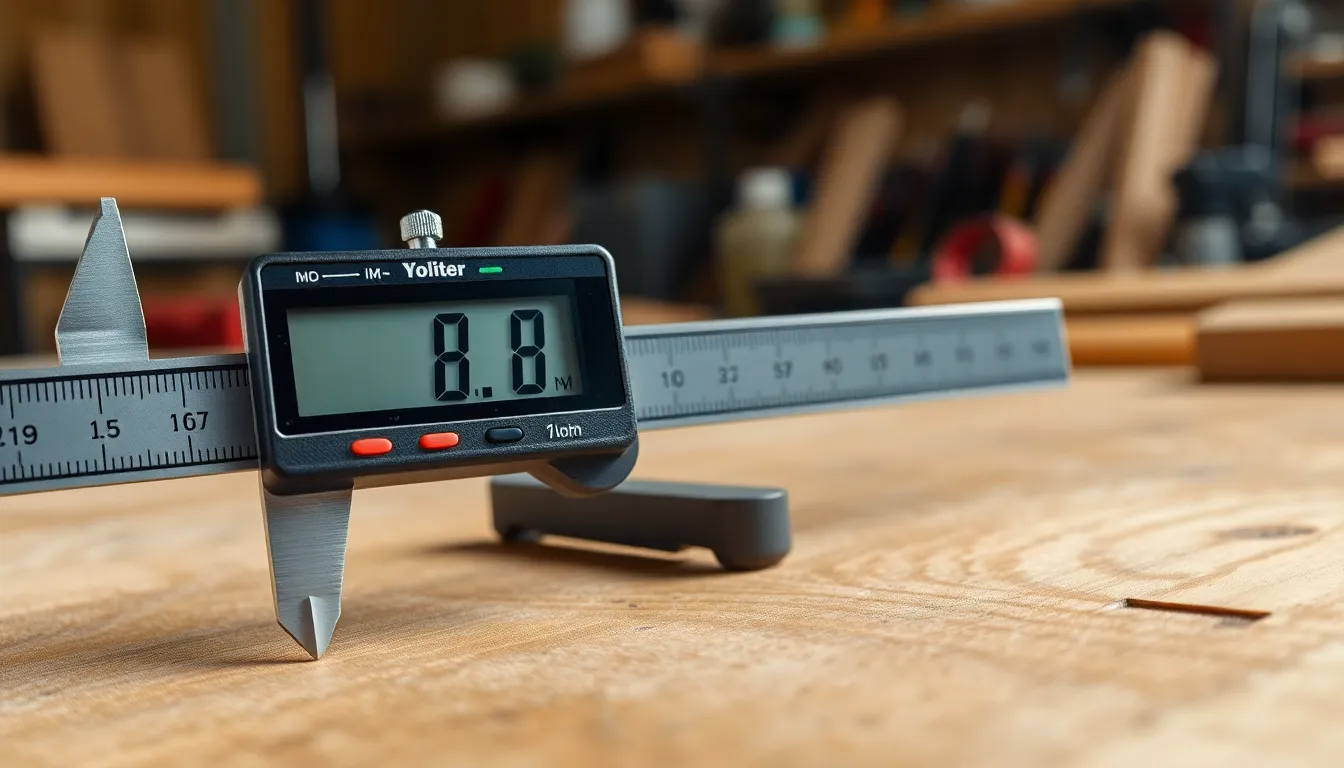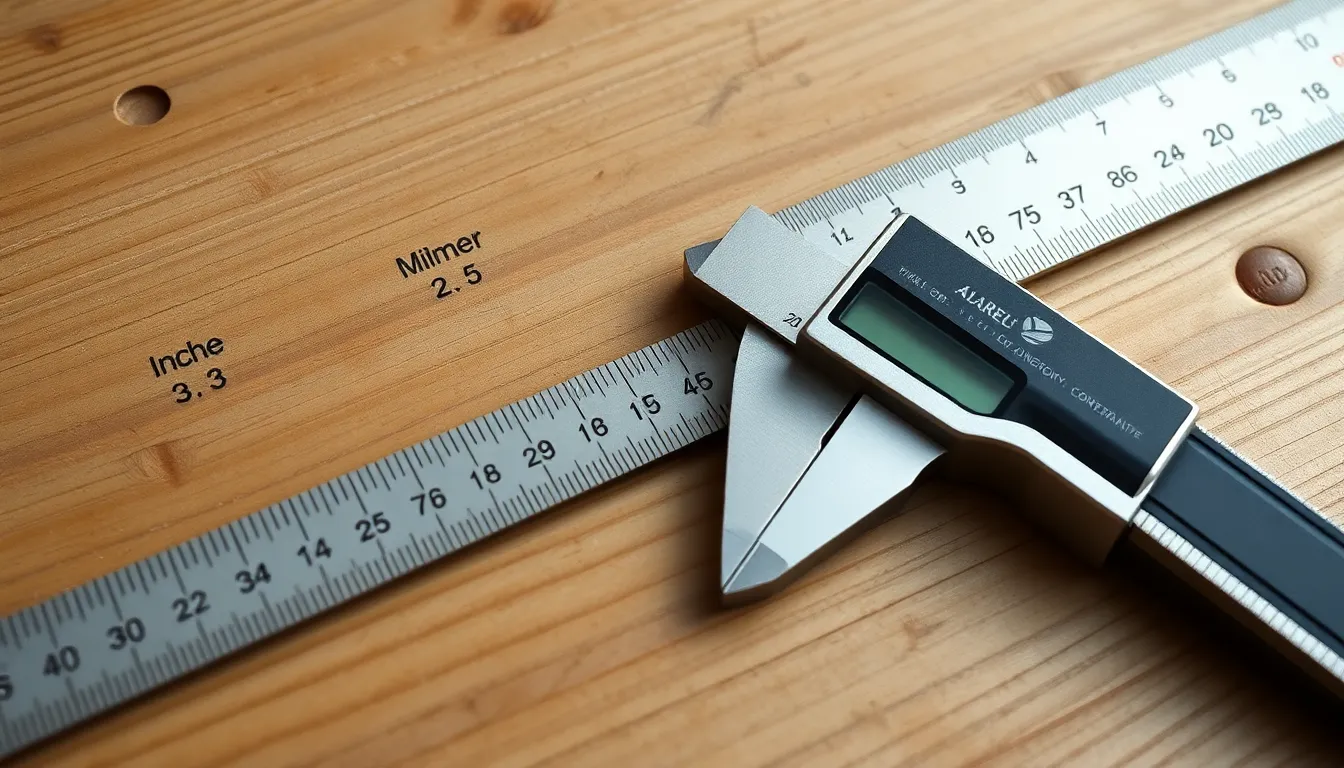When it comes to measurements, converting between different units can often be confusing. For those wondering how many inches are in 8 millimeters, understanding this conversion is essential, especially in fields like construction, engineering, and crafting. Millimeters and inches are commonly used in various applications, making it important to grasp their relationship.
In this article, readers will discover the straightforward conversion process between millimeters and inches. With just a simple formula, anyone can easily translate 8mm into inches. Whether it’s for a DIY project or a professional task, knowing this conversion will ensure accuracy and precision. Let’s dive into the numbers and clarify this common measurement question.
Table of Contents
ToggleUnderstanding Millimeters and Inches
Millimeters and inches serve as essential units of measurement in various fields. While millimeters are commonly used in the metric system, inches belong to the imperial system. Understanding both systems proves vital for accurate conversions.
The Metric System Explained
The metric system relies on units based on powers of ten. This system simplifies calculations and provides straightforward relationships among measurements. In this system, one millimeter equals one-thousandth of a meter. Millimeters are widely used in scientific contexts, manufacturing, and many parts of the world for everyday measurements.
The Imperial System Explained
The imperial system, used primarily in the United States, measures length in inches, feet, and yards. In this system, twelve inches equal one foot, and three feet equal one yard. The imperial system can present challenges due to its less intuitive conversion factors compared to the metric system. Despite this, it remains crucial in fields such as construction and engineering within the U.S.
Conversion Basics


Understanding how to convert between millimeters and inches is crucial for accurate measurements in various fields. Use a straightforward formula to efficiently make this conversion.
Conversion Formula
To convert millimeters to inches, the formula is:
[ text{Inches} = text{Millimeters} times 0.03937 ]
For 8 millimeters, the calculation would be:
[ text{Inches} = 8 , text{mm} times 0.03937 = 0.31496 , text{inches} ]
This means 8 millimeters equals approximately 0.315 inches.
Tools for Conversion
Several tools assist with converting millimeters to inches:
- Online Calculators – Websites dedicated to measurement conversions offer quick results.
- Conversion Apps – Mobile applications provide on-the-go conversion capabilities.
- Measuring Devices – Some rulers and calipers include both millimeter and inch measurements for direct reference.
Using these tools simplifies the conversion process and enhances accuracy in measurements.
How Many Inches Is 8mm?
Converting 8 millimeters into inches is straightforward using the correct formula. Understanding this conversion aids various professionals in maintaining measurement accuracy.
Step-by-Step Conversion
- Identify the Formula: The formula to convert millimeters to inches is:
Inches = Millimeters × 0.03937 - Plug in the Value: Substitute 8 millimeters into the formula:
Inches = 8 × 0.03937 - Calculate the Result: Multiply to find the inch equivalent:
Inches = 0.315
This method ensures clarity and precision when converting millimeters to inches.
Final Result
The conversion of 8 millimeters results in approximately 0.315 inches. This conversion is essential for tasks in construction, engineering, and other fields where precise measurements matter.
Practical Applications
Conversions between millimeters and inches play a crucial role in various daily tasks and professional fields. Understanding these conversions enhances accuracy in both simple and complex projects.
Everyday Uses of mm to Inches Conversion
Everyday scenarios often require converting measurements from millimeters to inches. Examples include:
- Home Improvement Projects: When measuring items such as space for furniture or fixtures, accurate conversions ensure proper fitting.
- Crafting: Many craft projects involve precise measurements for materials like fabric, paper, or wood. Craft enthusiasts frequently encounter requirements stated in different units.
- Health and Fitness: In fitness equipment specifications, dimensions may be listed in millimeters, necessitating conversion for understanding product sizes.
- Food Preparation: Some recipes use metric measurements, guiding cooks in preparing food accurately for portion sizes.
Importance in Various Fields
Multiple fields depend on millimeter-to-inch conversions to maintain precision and consistency. Key areas include:
- Construction: Builders often work with blueprints that combine both metric and imperial measurements, making accurate conversions vital for structural integrity.
- Engineering: Engineers commonly design components that require exact specifications. A small error in measurement can lead to significant complications or failures.
- Manufacturing: Factories producing parts for automotive or aerospace applications must adhere to tight tolerances, where millimeter measurements can dictate the success of product performance.
- Science and Research: In laboratories, scientists frequently measure samples in millimeters while publishing results in a context accessible to international audiences that may use inches.
Understanding these practical applications underscores the value of mastering conversions between millimeters and inches across various situations.
Understanding how to convert 8 millimeters to inches is essential for anyone working with measurements. This conversion not only aids in achieving precision in various tasks but also bridges the gap between metric and imperial systems. With the simple formula provided and the availability of helpful tools, anyone can confidently make these conversions.
Whether for DIY projects or professional applications, mastering this skill enhances accuracy and efficiency. Embracing both measurement systems can lead to better results in construction, engineering, and everyday activities. As individuals become more familiar with these conversions, they’ll find it easier to navigate tasks that require precise measurements.









